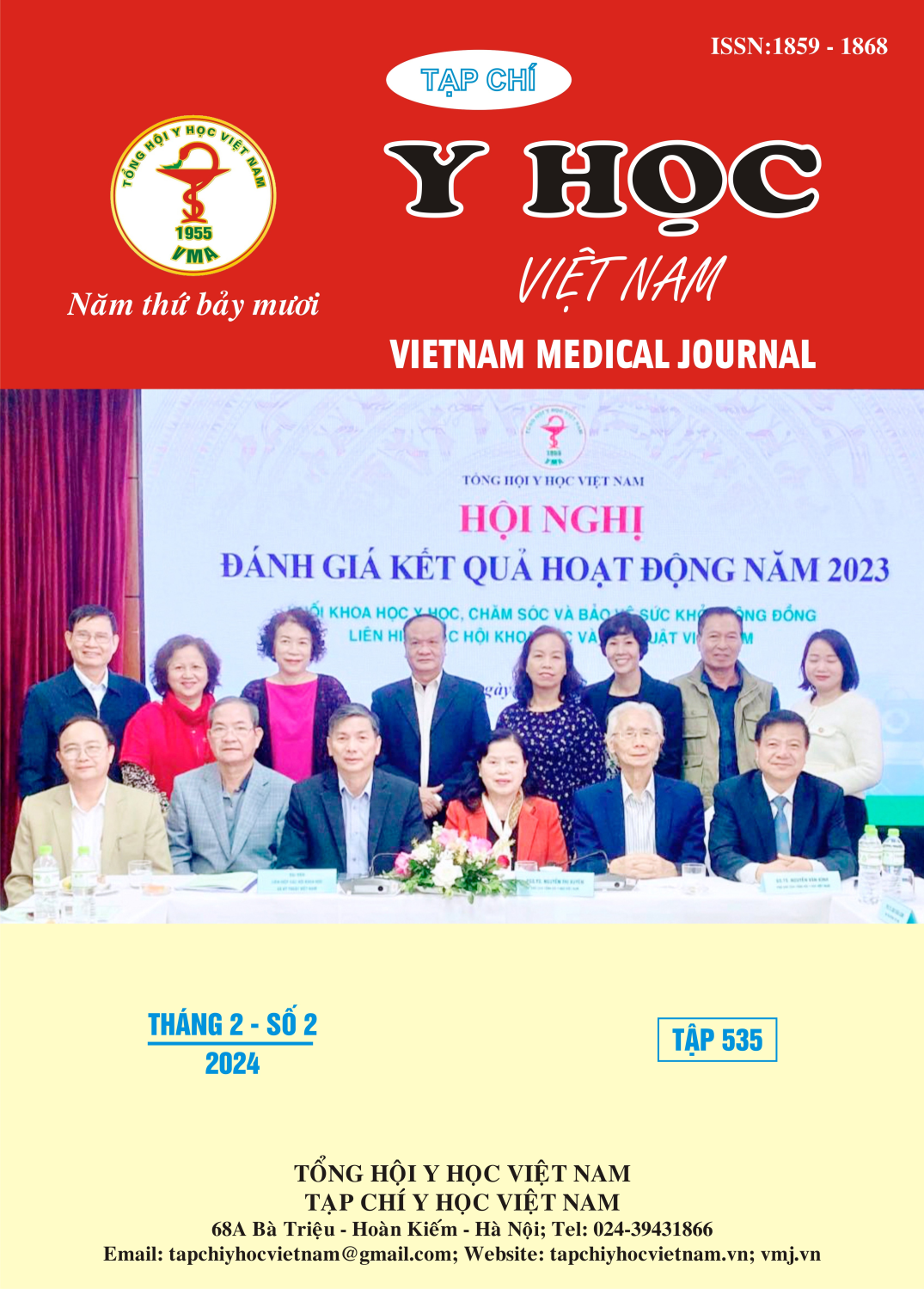SYMPTOM CHARACTERISTICS, SEVERITY, SUPPORT NEEDS, AND INTERVENTION STATUS FOR CHILDREN WITH AUTISM SPECTRUM DISORDER SEEKING EVALUATION AT THE DEPARTMENT OF PSYCHOLOGY AND BEHAVIOR, CHILDREN'S HOSPITAL IN CAN THO CITY
Main Article Content
Abstract
Background: Currently, there is a lack of comprehensive information regarding the symptom characteristics, severity, support needs, and intervention status for children with autism spectrum disorder (ASD) in general and those seeking evaluation at the Department of Psychology and Behavior, Children's Hospital in Can Tho City. This necessitates the urgent need to study and describe these characteristics, assess the effectiveness of current interventions, and propose suitable intervention methods. Objective: The study aims to achieve two main objectives: Determine the symptom characteristics of autism spectrum disorder, support needs based on DSM-5 criteria, and severity levels according to the Childhood Autism Rating Scale (CARS). Materials and Methods: A cross-sectional descriptive study was conducted on 61 children with autism spectrum disorder and their primary caregivers seeking evaluation at the Department of Psychology and Behavior, Children's Hospital in Can Tho City. Results: It was found that 98.1% of the children showed little interest, sharing, or appropriate emotional response to others. Additionally, 86.5% exhibited repetitive behaviors. In terms of communication and social interaction, 63.5% of the children required significant support, while 61.5% needed considerable support in terms of restricted and repetitive behaviors, interests, and activities. The CARS scores ranged from 31 to 53.5. Conclusion: A significant percentage of children, 63.5%, demonstrated a substantial need for support, particularly in relation to typical symptoms such as restricted eye contact. Moreover, 61.5% of the children required significant support due to repetitive behaviors, discomfort, or a tendency to seek specific sounds or textures. These findings underscore the importance of researching and implementing appropriate intervention measures to support and enhance the quality of life for children with autism in this age group
Article Details
Keywords
Autism, Autism Spectrum Disorder, CARS, DSM-5, children, Can Tho
References
2. Lê Thị Kim Dung (2021), Nghiên cứu đặc điểm lâm sàng và Kết quả can thiệp trẻ rối loạn phổ tự kỷ từ 24 tháng đến 72 tháng, Luận án Tiến sĩ Y học, Đại học Y Dược- Đại học Thái Nguyên, Thái Nguyên.
3. Đình Văn Uy, Nguyễn Ngọc Sáng, Phạm Thị Tỉnh (2019), "Đặc điểm dịch tễ học lâm sàng và kết quả điều trị của trẻ tự kỷ từ 3 đến 6 tuổi tại Bệnh viện Nhi Thái Bình", Tạp Chí Nghiên cứu Và Thực hành Nhi Khoa, 3 pp. 1.
4. Nguyễn Thị Thanh Mai (2022), "Tỷ Lệ Và Một Số Yếu Tố Liên Quan Đến Rối Loạn Giấc Ngủ Ở Trẻ Rối Loạn Phổ Tự Kỷ", Tạp chí Y học Việt Nam, 1 (516), pp. 177-180.
5. Nguyễn Tấn Đức (2018), "Rối loạn phổ tự kỷ và một số yếu tố liên quan ở trẻ 24-72 tháng tuổi tại tỉnh Quãng Ngãi.", Tạp chí Y Dược học - Trường đại học Y Dược Huế, 6 (6), pp. 218-225.


